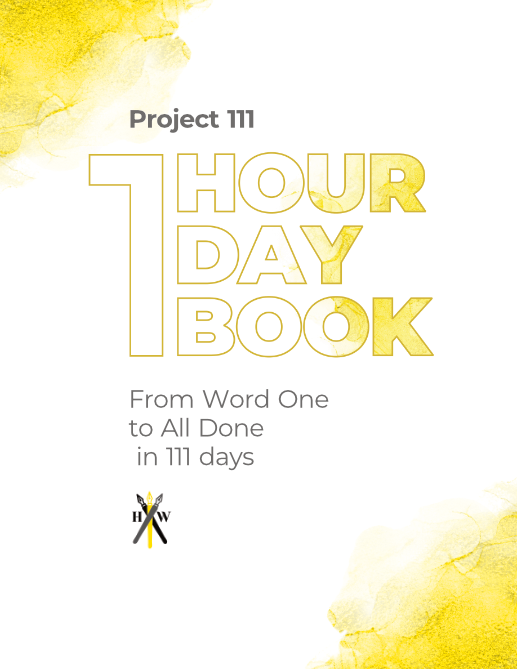Static characters, for all their unending steadfastness and lack of a character arc, have received a bad rap in plenty of storytelling media. People may think they’re flat characters or they’re boring or they defy the very reason for reading a story in the first place.
These are valid complaints for a certain type of static character: a poorly written one.
When done correctly, static characters can carry a reader’s interest an incredibly long way. I believe that readers en masse severely underate these characters because they’ve experienced some boring characters and their middle school teachers deplored static characters.
Or maybe this all boils down to the deep, boiling hatred some people have for The Catcher and the Rye.
Whatever the reasoning, the static character has long been waiting to sweep your readers off their feet and show them that an unchanging character may be exactly what your story needs.
In this article, we’ll start off with some examples of static characters and then discuss four ways to make sure your static character will entertain your readers. By the end, you should know how to write a static character!
Table of Contents
Examples of a Static Character

Before we get into some popular static characters, we should first define what a static character is.
A static character can have any number of character traits, but what sets them apart from the dynamic protagonist is their lack of significant change throughout the story. Where most characters undergo a character arc, the static character remains constant when others would buckle and change.
Oftentimes, the main character of a story will boast a dynamic arc while the villain refuses to change throughout the tale.
1. The first example of a static main character we’ll look at is the classic Sherlock Holmes.
Sherlock Holmes has long held a special place in his readers’ hearts for his charisma, eccentricity, and vast capability. When we pick up a Sherlock Holmes story, we know he’ll dazzle us with his quippy intellect and solve the mystery no matter the challenges that lay ahead.
Does that make him boring?
Maybe to some, but his predictability actually works in his favor. Rather than wondering how he will change, the reader then questions if he will change. Will something come up that finally breaks our Sherlock Holmes or will he continue to outsmart murderers?
2. The second example comes in the form of Harper Lee’s Atticus Finch.
That’s right, a character in a novel that consistently ranks in the top five best American novels is static. But, like Sherlock Holmes, his static nature works for his benefit rather than detriment.
In a novel full of social confusion, questionable expectations, and outright racial prejudice, Atticus Finch stands as a bastion of morality throughout the novel. We enjoy reading Atticus Finch because we know that he won’t change his values regardless of what society may throw at him.
(He’s also got some amazing quotes. That probably also makes reading him enjoyable.)
3. The third example comes from the more contemporary Harry Potter: Albus Dumbledore.
Dumbledore presents the reader with an intriguing form of static character. You may think to yourself, “But the Dumbledore we see at the end of Harry Potter seems nothing at all like the one at the beginning!” And you’re definitely right about that.
But the thing is, Dumbledore himself didn’t change, only our (the reader’s and Harry Potter’s) perception of him has changed. He retains the same character traits and personality throughout the series, but our knowledge of his motivation and actions shift as Harry grows older and understands the world of adulthood.
All of these characters had ample opportunity to change, but they remained true to their personality and values despite how characters around them may change.
1. Let the Backstory Do Some Work

The first method for making your static character more interesting may seem like a cheat. For this method, you need to know a lot of your character’s backstory.
By letting the backstory do extra work, you can bypass the static part of your static character.
This method plays on the fact that a truly static person is impossible. Everyone’s personality is informed by how they were raised, the decisions they made, and the place they’re from. No one is born an adult, and no child acts exactly how they will for the rest of their life.
Your static character’s backstory can become a mystery element for the story. The character’s personality, values, and morality will remain constant throughout the entirety of your novel, but sprinkled throughout the story, the reader can find out how they came to be that way.
The character’s backstory can be dynamic while they’re static.
Using this method, you can form a sort of “static arc” where the character will face their past and then come to a point where they decide if they will hold true to the life and values they currently hold, or if they’ll regress back into their old self and change (thus becoming a dynamic character).
When addressing your character’s backstory, you’ll need to write cautiously. If you use flashbacks or a frame narrative, you’ll technically no longer have a static character.
So when writing in the dynamic backstory, you’ll need to use subtext to get across that your character wasn’t always so stalwart and unyielding. You’ll can use dialogue, your character’s reactions, deeply rooted fears, and more to get this across, but remember, being too up front about this will make it far less enjoyable.

Our 84-page book planner and 111 day writing course.
2. A Broken World

Another way to make a static character interesting is including a dynamic world. This way, the reader still experiences a developing and changing story, but they can use the character as their foothold in understanding the events.
A book that shows this kind of static character against a dynamic world is The Hunger Games. Katniss Everdeen hardly ever changes (unless its her mind about her love interest), but throughout the book and series, we see that her ability to stay true to her values in the face of the tyrannical government ultimately brings it down.
To make this type of story work, you need to ensure that your characters values come across clearly and that the world is plastic (meaning able to change).
For this story to work best, you’ll want your world’s stakes to be just as engaging as anything from a character. In a sense, your world becomes its own character. Think of what your world wants, what it needs, how it can change, how it should change, and the like.
Your character and the world should stand in direct contrast. In The Hunger Games, one of the very first things we know about Katniss is her disdain for strict rules. We see her hunting outside the district to protect and support the people she cares about.
That first image we see of her doesn’t change for the entire book, but we do see the rules get stronger and looser, the districts grow further and closer, and the government rise and then fall.
By positioning your story in such a way, you’re almost guaranteed to have exciting and dynamic systems at play within your novel. People will want to see how your character can actually change the world.
3. An Unstoppable Force Meets an Immovable Object

The Dark Knight is an impressive movie for loads of reasons, but one of my favorite reasons is how they pit Batman and Joker against each other. Rather than just a fight of physical strength and clever wits, this movie shows the standoff of ideals and principles.
In other words, the story is about a static character and another character whose main goal is to change him.
Joker is an anarchist who wants to dissolve society and structures. He sees Batman’s “one rule” of not killing as the ultimate rigidity that he must tear down.
These types of stories can be risky though. You don’t want to make your character seem self-righteous or totally unbreakable.
Making your character morally gray (like Batman) is a great way to make them an engaging character who you route for despite their questionable values. In a sense, the fewer but more concrete values you give your character to stick to, the more room you have to try and break those values (paradoxically I suppose).
You can have a single character try to break down your main character, or you can make it the entire goal of a group of people or even everyone your static character interacts with.
The stakes of this story are obvious, and because of that, you can ratchet them up buy trying to tear down your main character. How does that sound for exciting writing?
4. Personality to the Max

The final way to make a static character interesting is to give them such an interesting personality that they could do anything and people would still read/watch.
This type of story is ideal for episodic installments. Think back to Sherlock Holmes. He’s so great that he doesn’t need to change. All Sir Arthur Conan Doyle had to do was come up with new mysteries and situations because he already perfected the character.
This trick will also help you if you don’t like writing character arcs in the first place. You can just come up with a great character, shorten the medium, and then explore different settings, villains, love interests, characters, and whatever else you want to experiment with.
You can write short stories, novellas, TV shows, and novels this way. Just remember to keep your character interesting and the situations fresh. Otherwise you run the risk of writing the same story over and over.
Rick and Morty does an excellent job of giving its static characters room and reason to explore.
Conclusion

Hopefully you’ve seen some of the potential ways to write a good static character.
I personally think they are largely misunderstood as boring, flat characters, but they can be every bit as dimensional and exciting as a dynamic character.
Writing a static character can shift the way you go about revealing your character’s backstory. By slowly revealing it over the course of your novel, you can keep your readers on their toes, trying to anticipate why your character became so set in their ways.
Doing so can also give you the option for an arc that they ultimately reject, but even the pseudo-arc can engage your readers.
Another way to rethink how you tell stories with a static character is to consider the world as more of a character. Your static main character should stand as a bastion of resistance to an otherwise problematic world. They will help the world have its own character arc while remaining immovable in their values and personality.
Another story type involves pitting your main static character against the antagonist whose goal is to corrupt their values or change them. This forms an interesting relationship with extremely clear stakes: two things that make a great story.
The final way to write an enjoyable static character is simply to write an excellent character. This is more of a traditional approach, but it can be such a fun way to experiment with stories. If you have a character you love and whom reader can’t get enough of, an episodic approach to storytelling with that character can be so rewarding.
Give static characters the love they deserve and consider writing one into your next story. Also, if the idea intrigues you but you prefer writing character arcs, try writing a static character as a secondary character.
For more writing tips, check out our blog, and if you’re wanting to finish writing a novel but don’t know how, try our Habit Writing course that takes you from an idea to a finished novel in 111 days!
gavinwride
Gavin is a fantasy author, short story enthusiast, and nature lover. When he’s not reading, writing, or exploring the outdoors, he is likely playing games. His board game collection is probably too big for someone living in a small apartment, and he has enough yet-to-be-played video games to fill a lifetime. His favorite book is "The Name of the Wind". His favorite author is Edward Abbey. His favorite game is "Dark Souls III", and he’d be more than happy to spend the day talking about lore, bosses, and game mechanics.
Our 84-page book planner and 111 day writing course.
